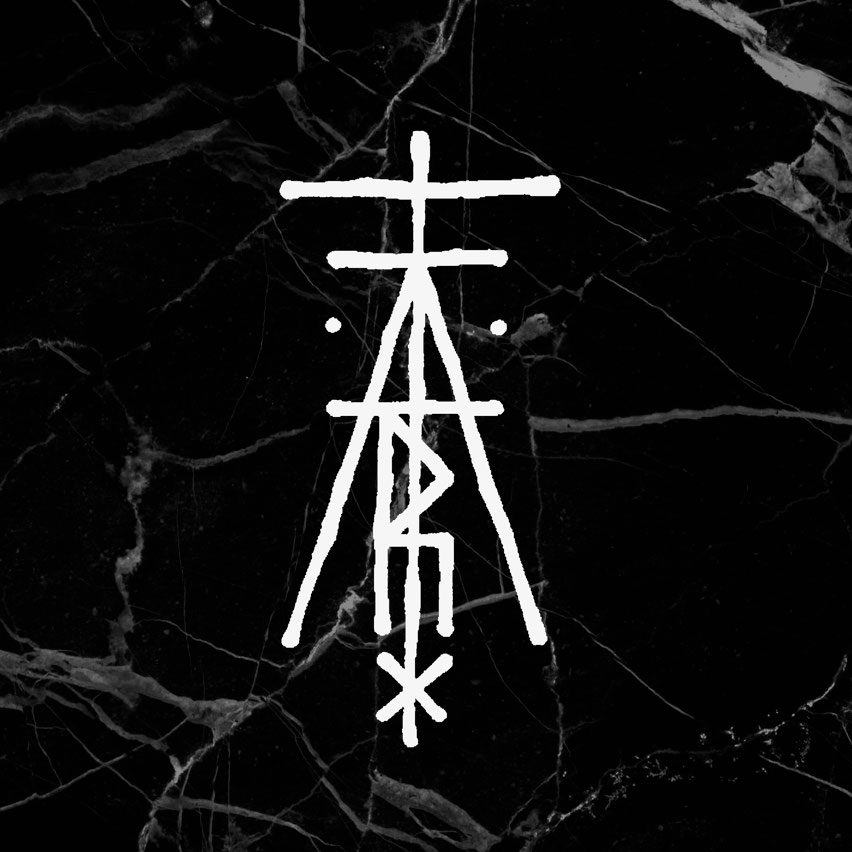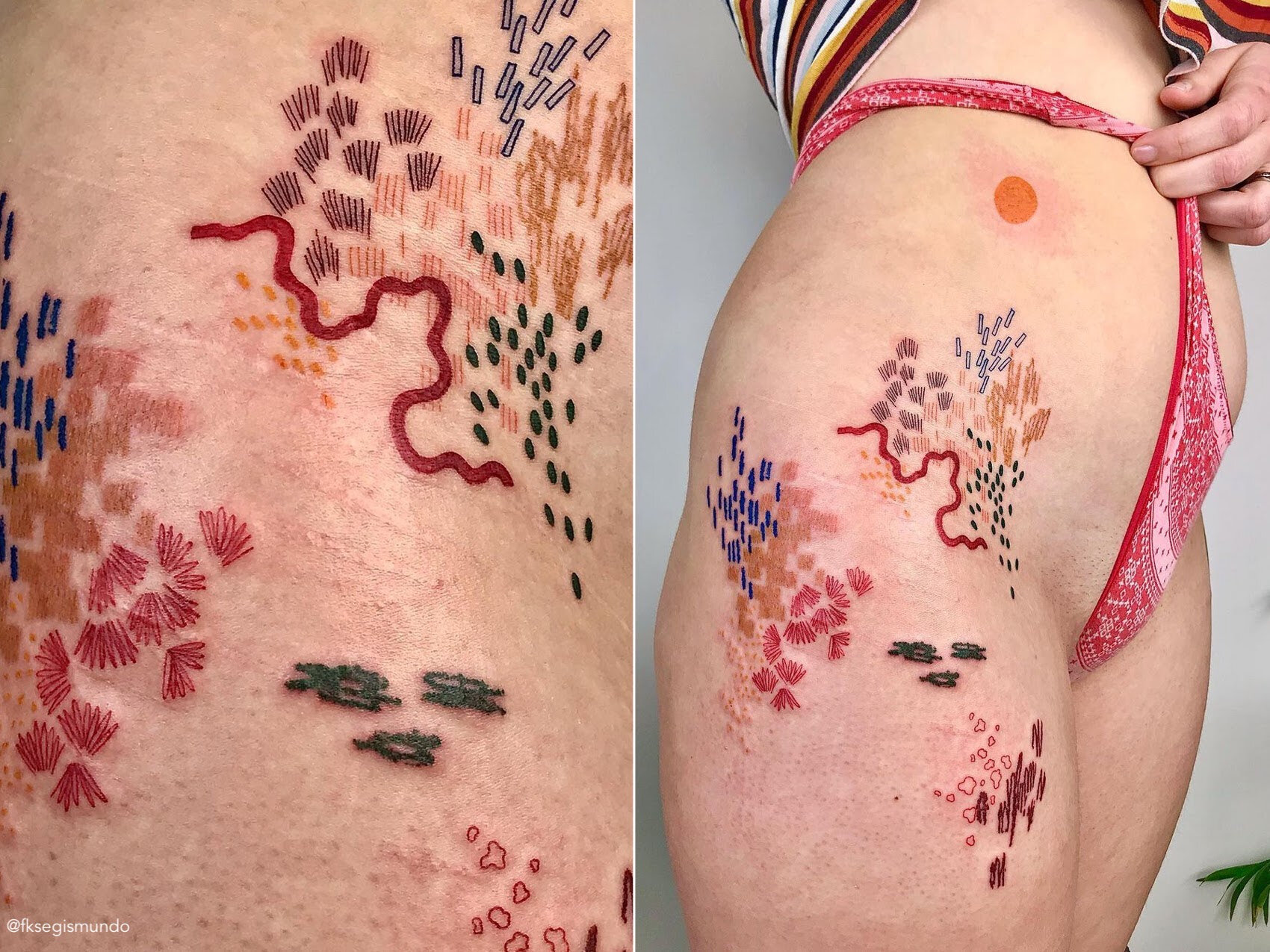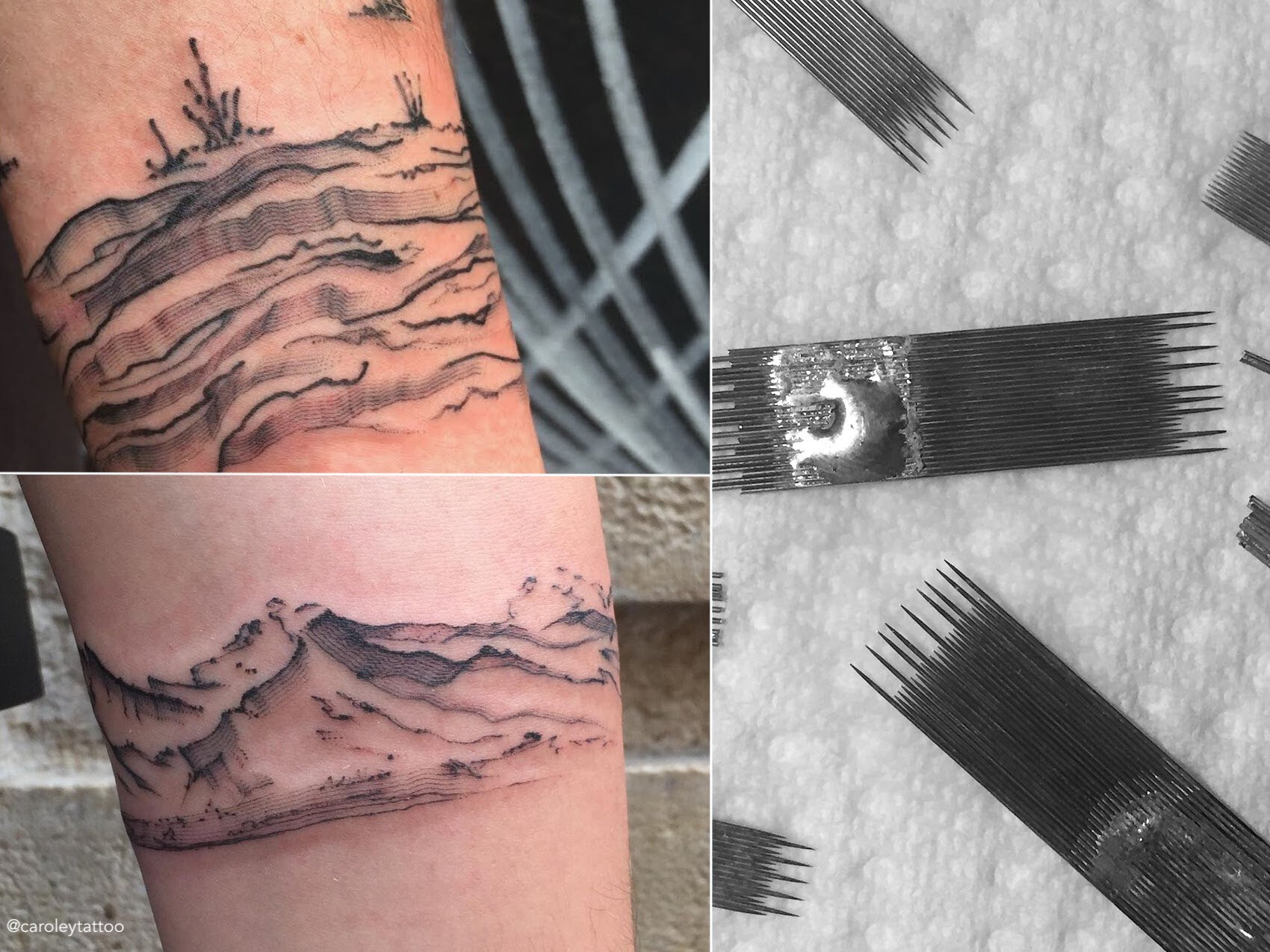TEXTURE
AN UNDERGROUND CONVERSATION ON MODERN TATTOOING
Rust, 23k Gold, acrylics and oil on canvas by @psydala, Ravensburg DE
TEXTURE
When we admire a tattoo's texture, what are we really appreciating?
Assuming there's no scarring (which we don't have to assume, but more on that later), tattooed skin is tactilely indistinguishable from non-tattooed skin. That's why texture is, in my opinion, all about optical illusion. It simulates a sensory experience that doesn't actually exist.
Marking black over grey wash to simulate raised layers. - A_.Void
Using negative space and radial dispersion to simulate paint splatter. - Maison Métamose
Scaling the entire body with dotwork to simulate soil patterns of a tilled farm. - Nancy Jehagi
INSPIRED BY THE NATURAL WORLD
Sandy, smoky, oily, watery, sharp like a rock, oozing like lava — what texture does the tattoo evoke? And how often is it reminiscent of nature?
The references above were provided by Brooklyn-based tattooer and painter, Frances Segismundo. "All the elements, forms, textures and colours are derived from patterns I see in the natural world," Segismundo explains. "The flow of each piece (tattoo or painting) is composed in a way to showcase the balance of all those elements in conversation with each other."
Often, these compositions also work with existing scars on the body, recontextualizing the skin's own variations.
Other tattooers create and modify new tools to achieve a specific look. Caro Ley solders her own needles with custom groupings, and holds workshops around the world to teach others how to do the same.
Below are images of her creation process, a set of needles, and samples of the end result. The two samples are intended to reference a waterfront and a mountaintop, respectively.
SCARRING AS DETAIL
Existing scars can be woven into a composition, as demonstrated by Segismundo. But what if the piece could be gently raised, or have just a few raised elements?
Melbourne's Dead Bird Flying OK caught my eye recently with the marrow mark series. Specifically, it's a form of ink rubbing (scarification with tattoo ink rubbed into the wound) that takes on a very organic and asymmetrically balanced look. "I think the first time I did it was with a deep yellow," she told me. "A client was bleeding a lot and I just couldn't see the yellow, so I had an urge to wipe ink into it."
It was only after this experiment that she learned about the history of ink rubbing, as well as similar techniques like skin stitching (sewing ink into the skin with a needle and thread) that have been a part of indigenous tattoo rituals for centuries.
Not only is the end result visually interesting, but I love that she arrived at such an historically significant technique on a whim. The more time I spend in contemporary tattoo spaces, the more I see people unwittingly recreating ancient patterns and processes. It's like when all the "shoulds" and stigmas are removed, we naturally drift back to impulses that are fundamentally human.
SIMULATING OIL, CRAYONS, CHARCOAL...
Is the tattooer also a painter, a charcoal illustrator, a street artist, a textile designer, a woodworker...?
Usually, the most unconventional aesthetics come from people who work in other media. Special tools aren't required to simulate smoke or crayon or oil on skin. But, a thorough understanding of the medium they're attempting to mimic is pretty crucial in order for it to read effectively.
Bona Tattoo's work imitates acrylic pastels on paper.
Backpiece concept by Monika VLC inspired by a paper and glue collage.
Smoky charcoal elements by Olivier Poinsignon
I'll close with these crayon, pen and marker textures by Linda Minervas
All views in this newsletter are my own. Nothing is currently sponsored. This is a free labor of love, as it's always been.
I welcome your feedback, corrections and contributions. All image copyrights are retained by the artists.
Buy me a coffee if you're a cutie!
PayPal: tattrx@gmail.com
With love,
Morgan
















